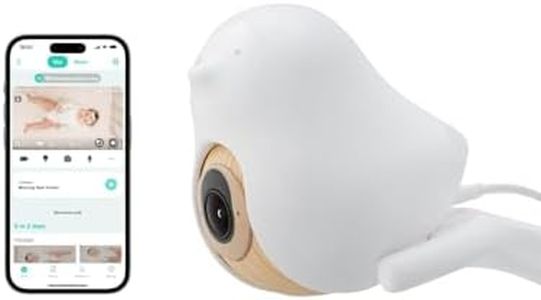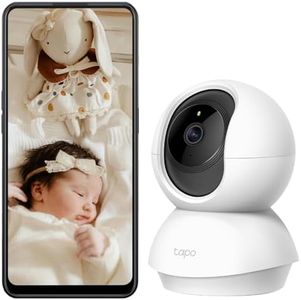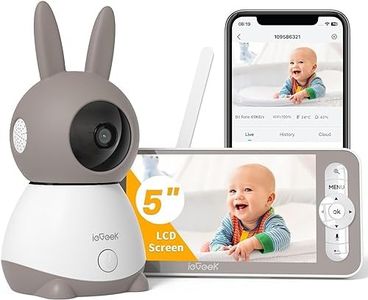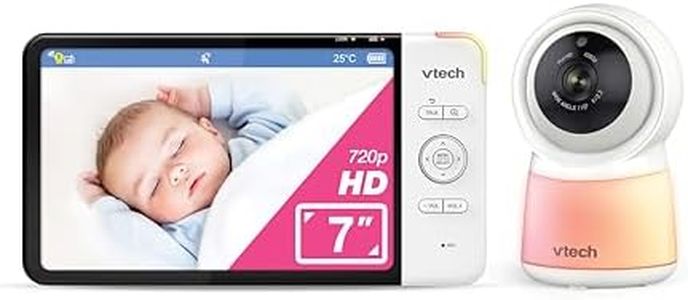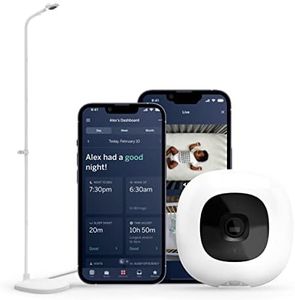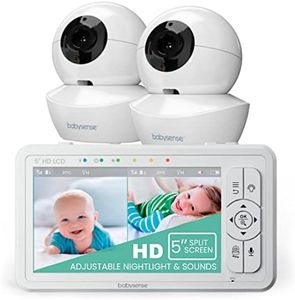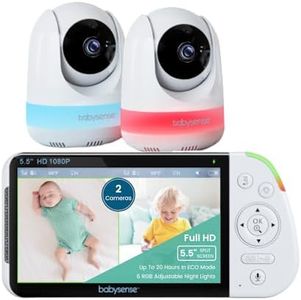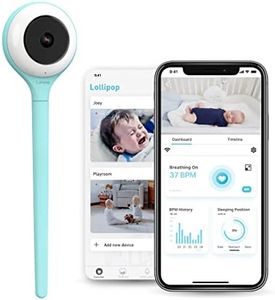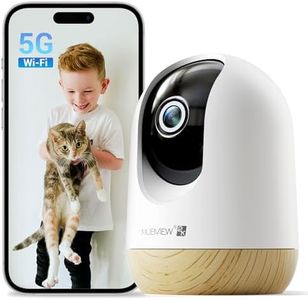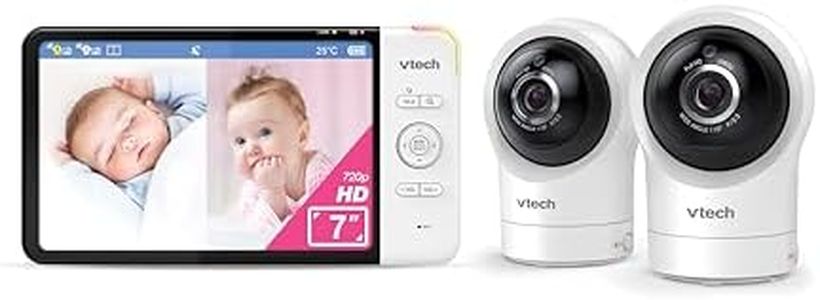We Use CookiesWe use cookies to enhance the security, performance,
functionality and for analytical and promotional activities. By continuing to browse this site you
are agreeing to our privacy policy
10 Best Cheap Baby Monitors
From leading brands and best sellers available on the web.Buying Guide for the Best Cheap Baby Monitors
Choosing the right baby monitor can make parenting a bit easier and offer peace of mind, even if you’re focusing on affordable options. When shopping for a baby monitor, think about what you truly need rather than just hunting for the lowest price. Consider how and where you’ll use it�—maybe you want to keep an ear on your baby while you’re in another room, or you’d like a video feed for reassurance. Knowing your needs helps you pick a monitor that won’t leave you wishing for more or regretting unnecessary extras.Audio vs. VideoThis spec defines whether the monitor sends only sound or both sound and video from your baby’s room. Audio-only monitors are simpler and often more budget-friendly, while video monitors let you visually check on your baby. If you just want to hear if your baby wakes up, audio might be enough. If you’d like to see your baby’s movements or breathing, choose a video monitor. Consider your daily routines—the more you want visual reassurance, the more a video monitor matters.
RangeRange measures how far you can be from the baby unit before losing the signal. It’s important if you live in a large home or often spend time in the backyard. Basic models usually offer an indoor range of about 150-300 feet, while some may extend up to 1000 feet outdoors. If you live in a small apartment, even a lower range is sufficient, but bigger houses or use over several floors means you’ll want a higher range.
Sound SensitivitySound sensitivity refers to how well the monitor picks up noises. High sensitivity means you’ll hear every little coo or rustle, while lower sensitivity picks up only louder sounds like crying. If you want to be alerted at the smallest sounds, go for higher sensitivity. But if you’d rather only be warned if your baby is crying or needs attention, lower sensitivity can mean fewer disturbances.
Battery Life and Power OptionsBattery life is how long the parent unit can run on a charge, and power options describe whether the monitor uses batteries, plugs into outlets, or both. Short battery life means more frequent charging or changing batteries, especially if you move around with the monitor. If you want to carry the monitor throughout your day, look for one with longer battery life or one that can be plugged in as well as used on batteries. Fixed placement (like leaving it on a nightstand) means battery life is less important, but portability calls for longer-lasting power.
Interference and SecurityInterference determines how much static or noise you might hear from electronics or other wireless devices nearby. Some monitors have technology to reduce this, making the signal clearer. Security relates to whether others can accidentally pick up your monitor’s signal. For more privacy and clearer sound, look for models with encrypted signals or digital transmission. If you live in an apartment complex or have lots of wireless devices, this spec is more important; in a more isolated or less crowded home, it may matter less.
